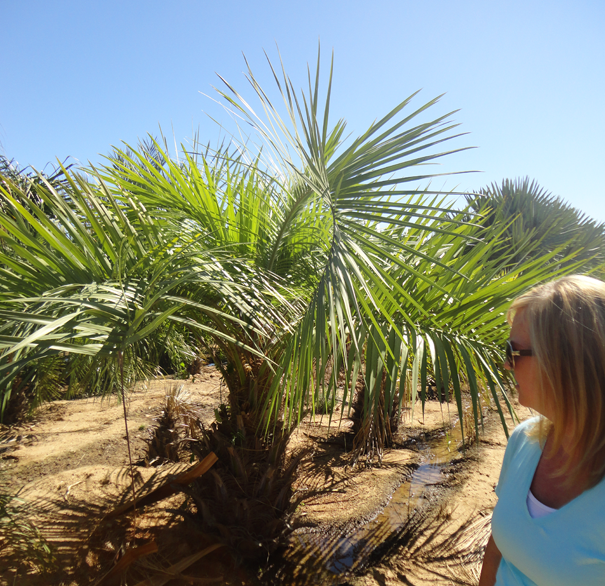THESE FANTASTIC PALM SEEDS ARE BEING OFFERED FOR SALE AT $8 PER 10 SEEDS.Add $5 to order to cover pack/post charges.
Jelly Wine Palm
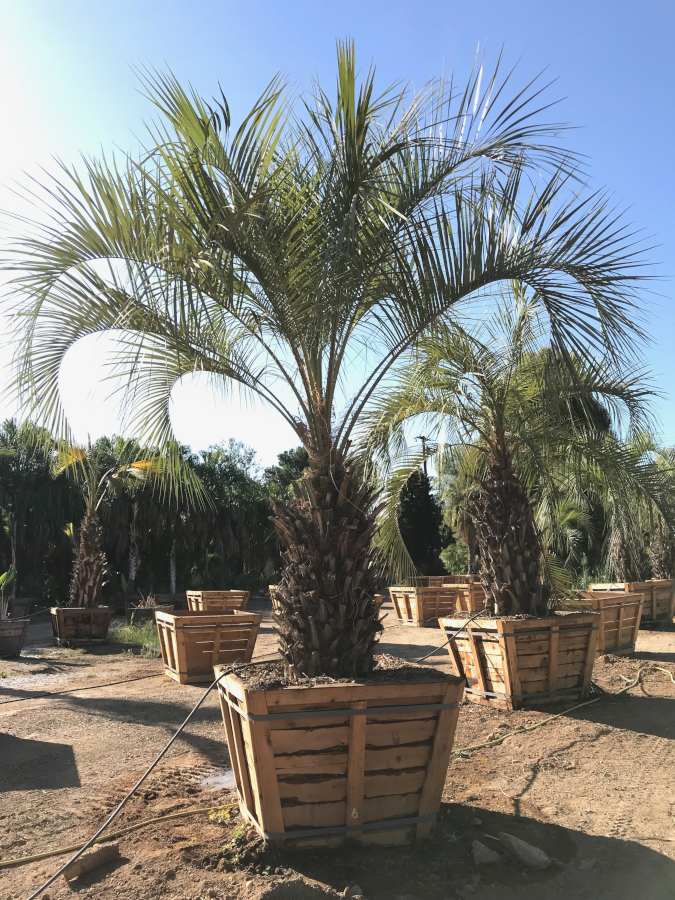
The Pindo, also called Jelly or Wine palm, is a hardy tree resistant to cold and drought. An uncommon sight outside of botanical gardens or parks, it boasts feathery, graceful silver-blue-green pinnate leaves and a thick, short trunk with persistent decorative leaf bases.
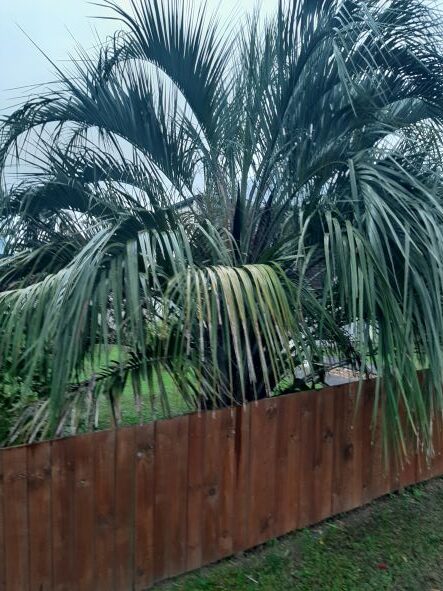
The exceptionally long pinnate leaves of the Butias in our collection arch dramatically, their tips curving downward, dangling just above the ground on younger specimens.
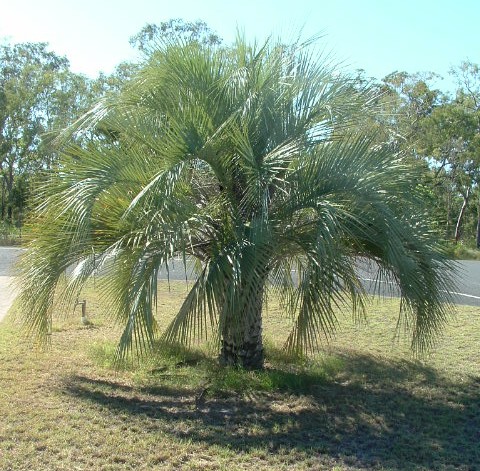
The Jelly Palm commands a large footprint, and is ideally planted as a solitary feature in any yard or poolside. This palm deserves recognition not only for its hardiness, but also for its production of yellow and orange flowers, which mature into bountiful hanging clusters of orange fruit during the summer. The fruit of the B. capitata is most delightful – a tart guava-banana-pineapple-nutty taste – that cannot be adequately described or compared. Commercially the fruit is used in jellies, jams, and for making wine. For this reason, the Pindo Palm is also known as the Jelly Palm or Wine Palm.
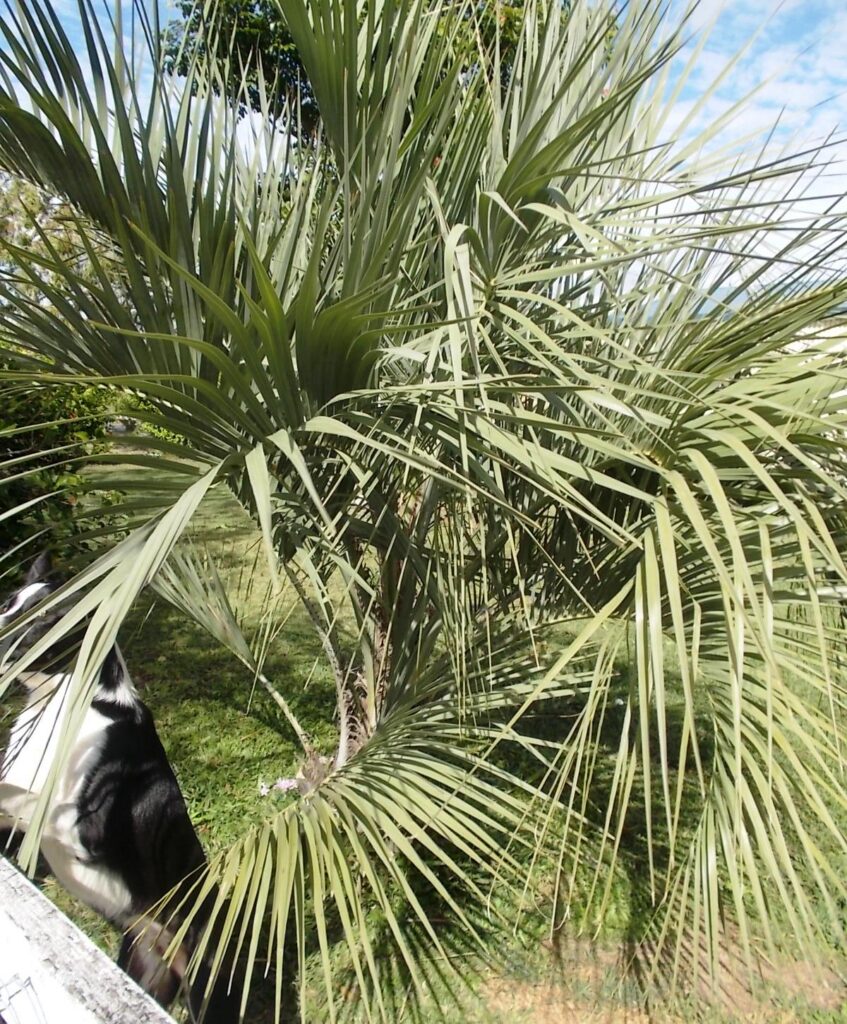
Native in Brazil, Paraguay and Uruguay, the name derives from an aboriginal term meaning spiny and the latin capitata, meaning “with a dense head.”
Conditions for Growth
The Butia. Yet another palm ideally suited for Southern California. It is among a small number of pinnate palms with a reduplicate leaf form that does well in hot, dry climates.
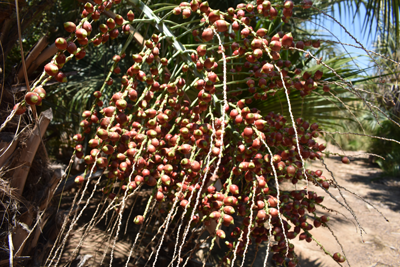
Resistant to drought, cold and coastal salt air, this palm will take full sun or partial shade. It will grow in containers or in the ground and thrives in the inland heat — possibly even into the desert regions — tolerating short spells as low as 15 degrees. It is adaptable to most soil types. Frequent watering is recommended during hot or dry spells until mature (2 years) and then little to moderate water should be required. This palm will flourish with a little help from regular fertilization and can suffer from magnesium deficiency in poor, clay soil. Fronds do not self clean, so removal by trimming above leaf bases will keep your Pindo Palm beautiful.
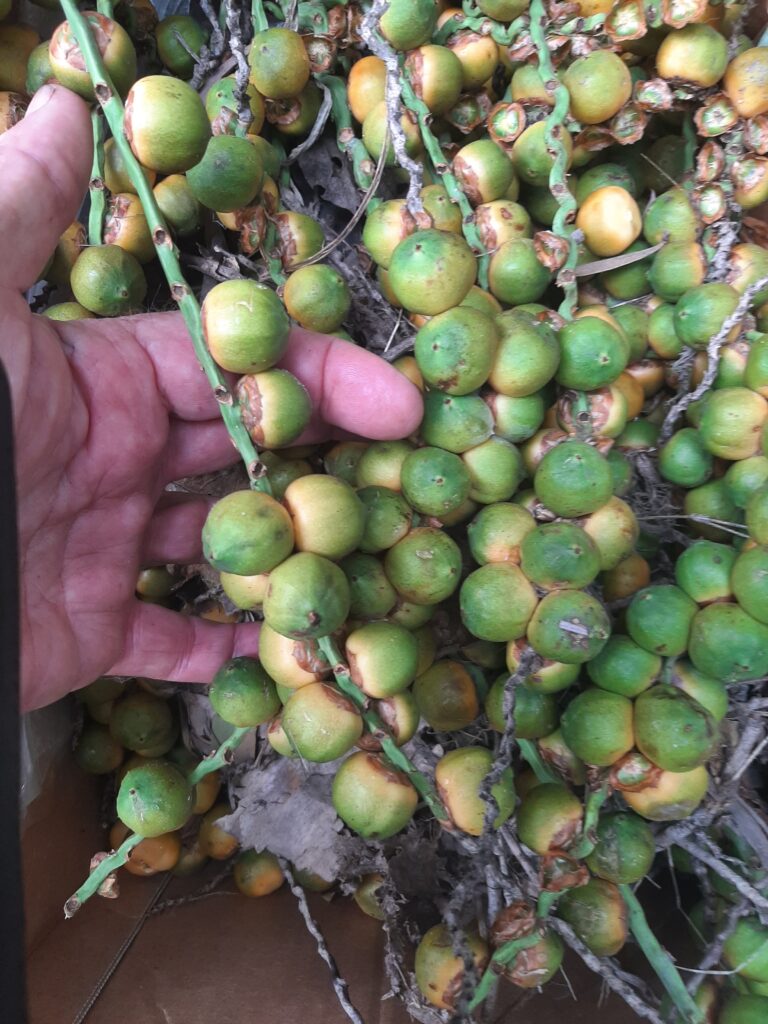
Growth Rate and Size
The slow yet steady-growing Pindo Palm has the potential to reach 15-25 feet tall, however this could take up to 80 years. Its curving, feathery fronds can grow up to 9 feet long.
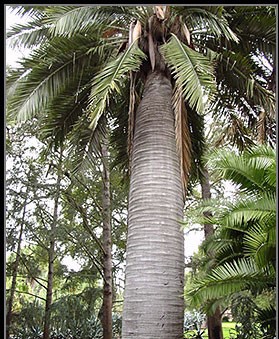
Description
Hardy pinnate palm with reduplicate leaf form and large stem. Persistent fibrous leaf bases form wide trunk giving way to solitary, grey stem about 1.5 foot in diameter. The crown is robust with long leaves. Leaf petiole is 28 to 26 inches long with additional 6-9 foot rachis that dramatically arches and re-curves toward the ground. Petiole is lightly armed with teeth near base.
Henry Any questions or if buying, contact me HERE



